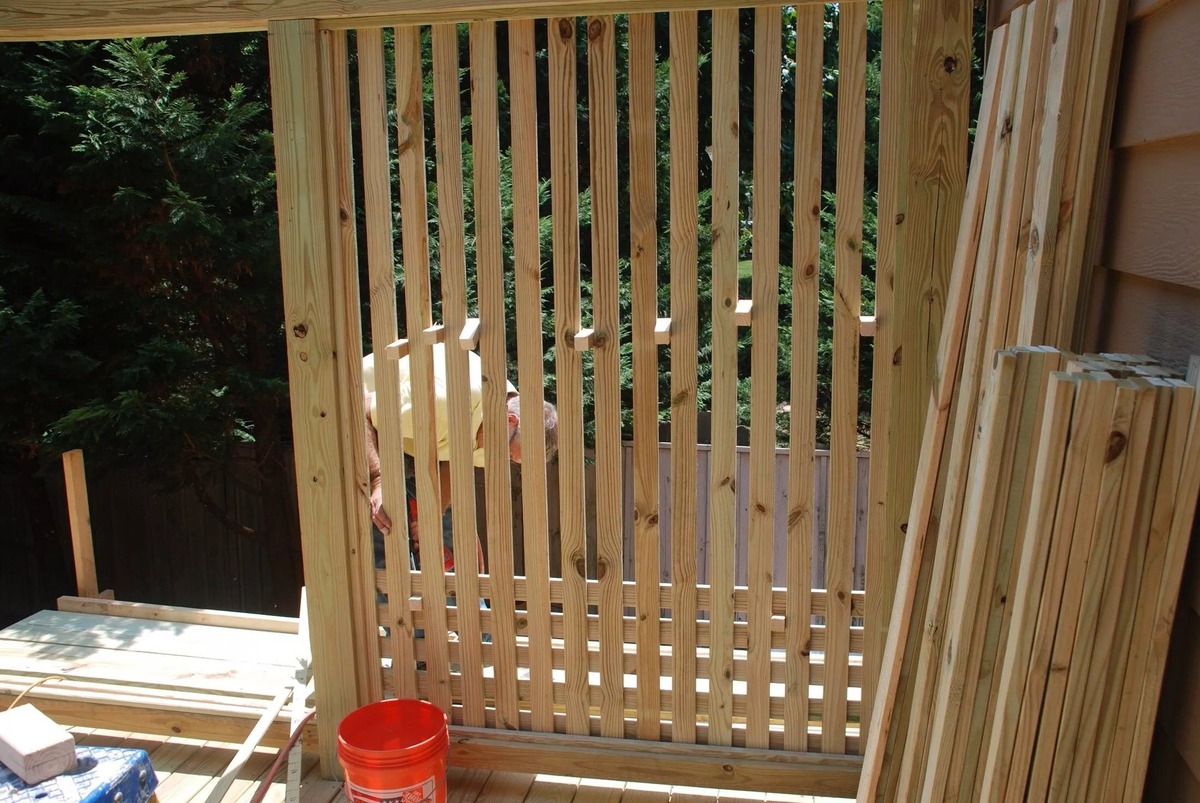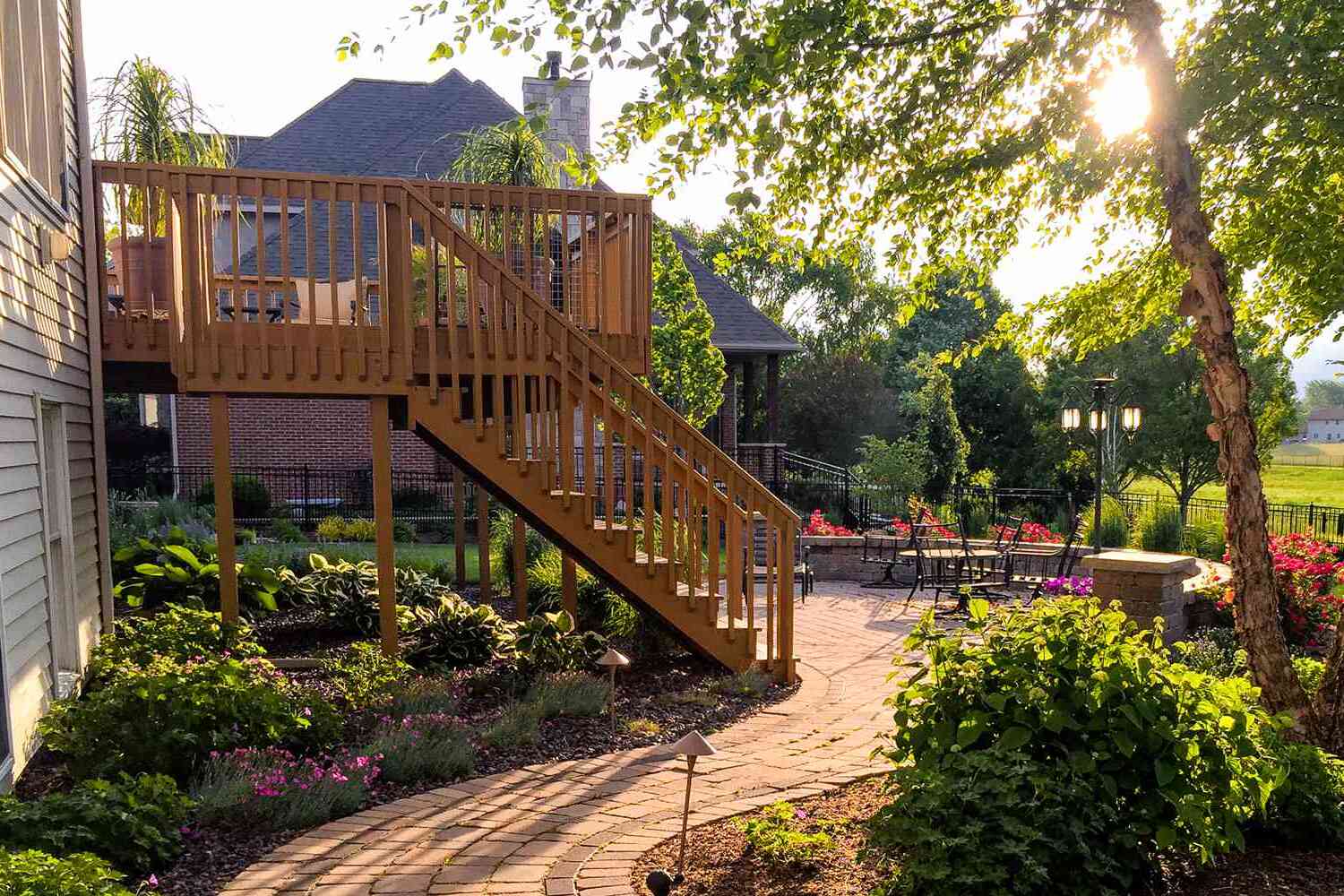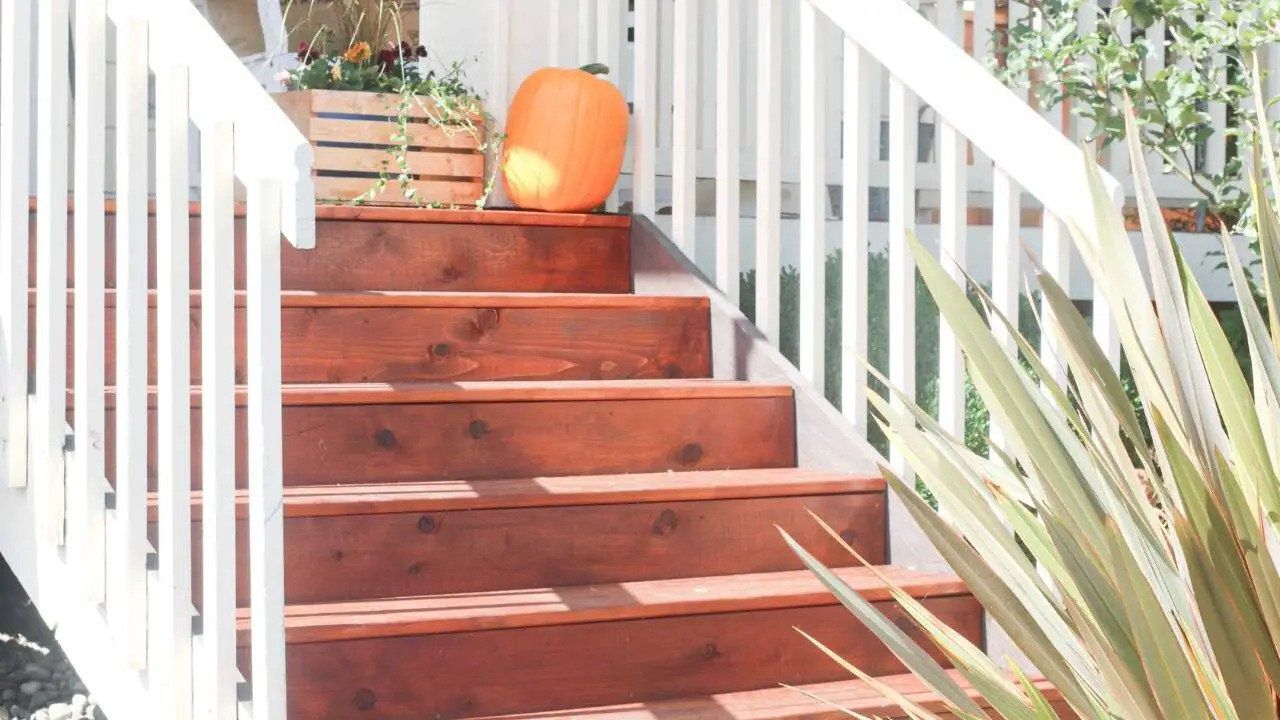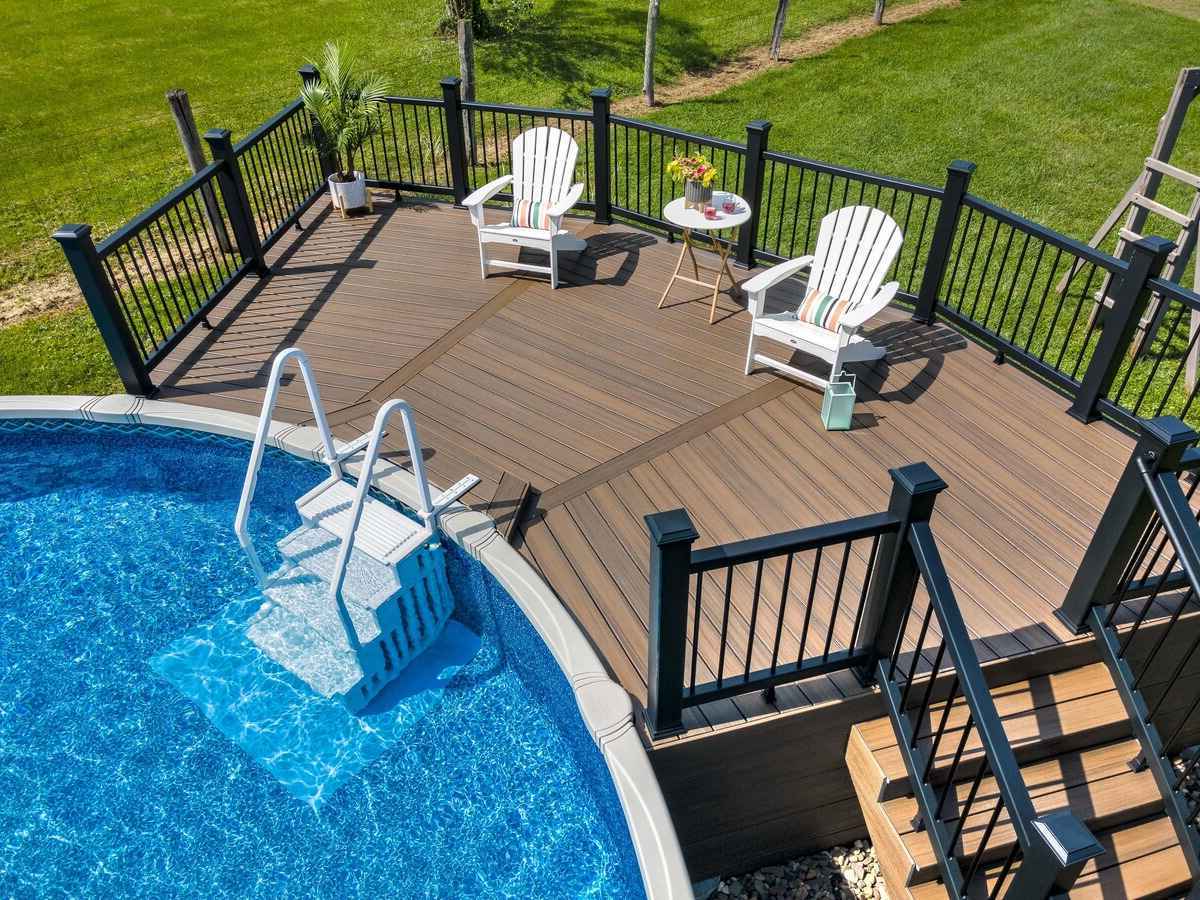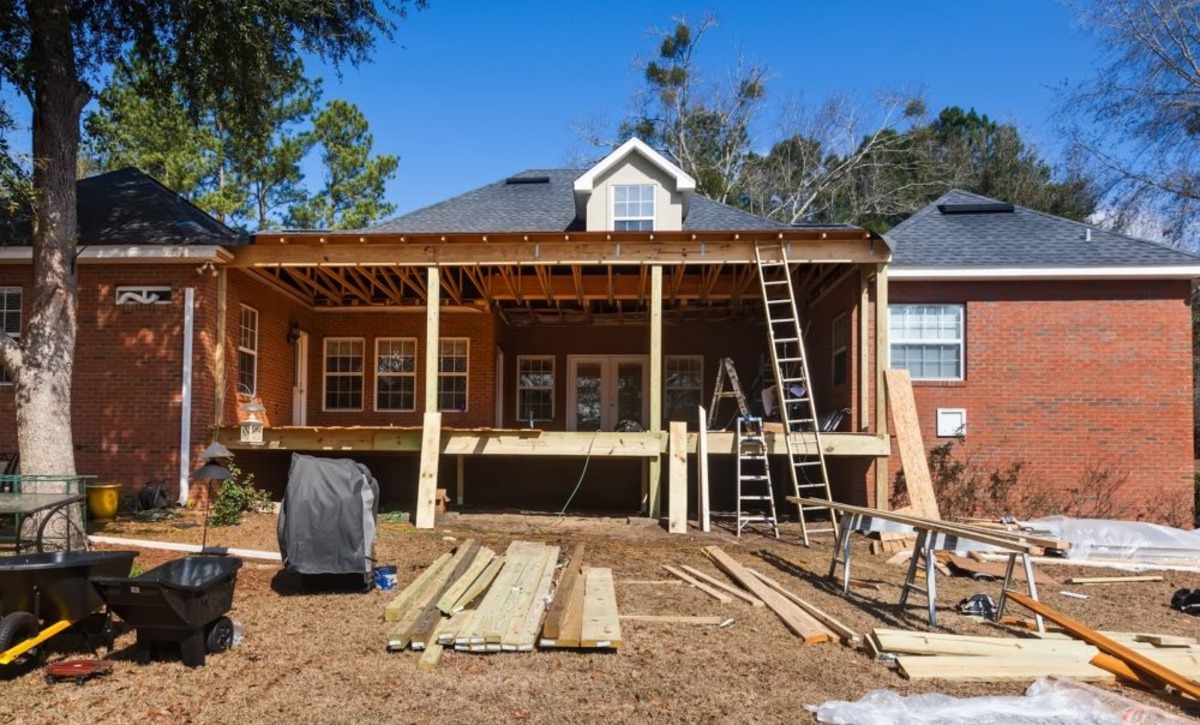Home>Create & Decorate>DIY & Crafts>How To Build Composite Deck
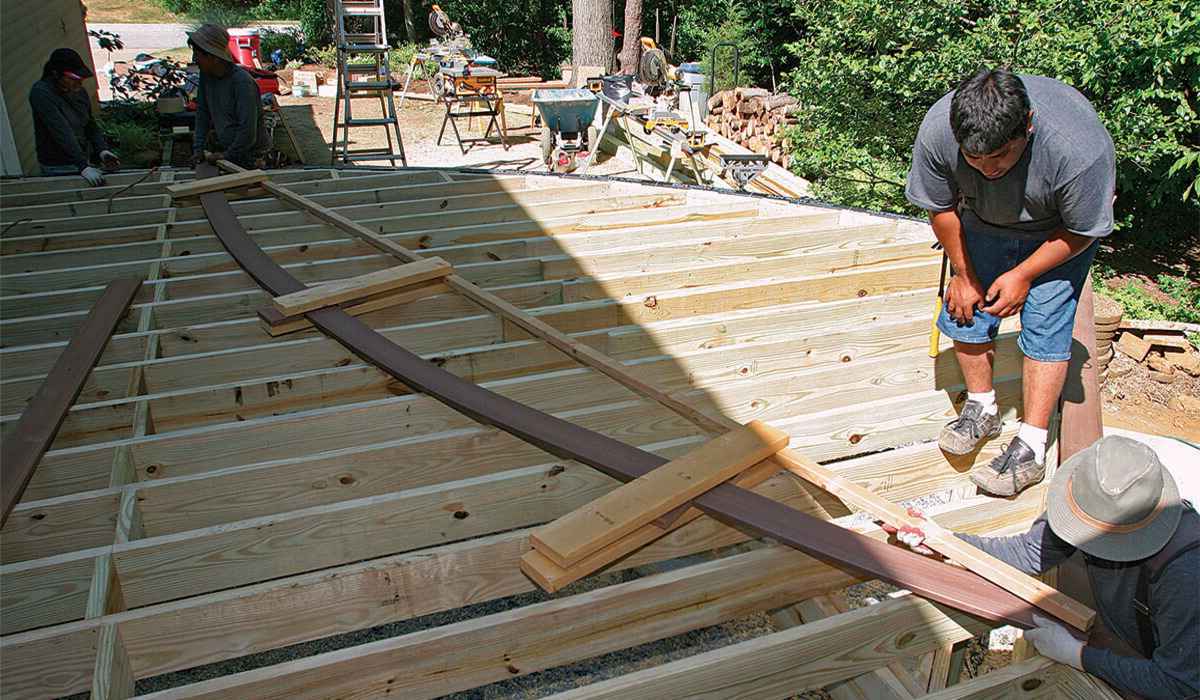

DIY & Crafts
How To Build Composite Deck
Published: February 27, 2024

Content Creator specializing in woodworking and interior transformations. Caegan's guides motivate readers to undertake their own projects, while his custom furniture adds a personal touch.
Learn how to build a composite deck with our step-by-step DIY guide. Create a beautiful outdoor space with our expert tips and tricks. Perfect for DIY & Crafts enthusiasts!
(Many of the links in this article redirect to a specific reviewed product. Your purchase of these products through affiliate links helps to generate commission for Twigandthistle.com, at no extra cost. Learn more)
Introduction
Building a composite deck is an exciting and rewarding DIY project that can transform your outdoor living space into a beautiful and functional extension of your home. Whether you envision a cozy spot for relaxing, a space for entertaining guests, or a versatile outdoor dining area, a well-designed composite deck can fulfill all these purposes and more.
Composite decking offers a myriad of benefits, including durability, low maintenance, and aesthetic appeal. Unlike traditional wood decks, composite decks are resistant to rot, warping, and splintering, making them an ideal choice for homeowners seeking a long-lasting and hassle-free outdoor flooring solution.
In this comprehensive guide, we will walk you through the step-by-step process of building a composite deck, from planning and designing to gathering materials, preparing the site, constructing the substructure, installing the decking, and adding finishing touches. Additionally, we will provide valuable maintenance and care tips to ensure that your composite deck remains in top-notch condition for years to come.
By the end of this guide, you will have the knowledge and confidence to embark on your composite deck building journey, creating a stunning outdoor space that reflects your personal style and enhances the enjoyment of your home. So, roll up your sleeves, gather your tools, and let's dive into the exciting world of composite deck construction!
Planning and Designing Your Composite Deck
Before diving into the physical construction of your composite deck, it's crucial to invest time in meticulous planning and thoughtful design. This phase sets the foundation for a successful and visually appealing outdoor living space that aligns with your lifestyle and aesthetic preferences.
Assess Your Needs and Preferences
Begin by envisioning how you intend to use your composite deck. Will it primarily serve as a relaxation area, an entertainment space, or a combination of both? Consider the furniture, amenities, and activities you envision for the deck. This initial brainstorming phase will help you determine the deck's size, layout, and functional elements.
Explore Design Options
Composite decking comes in a variety of colors, textures, and finishes, allowing for endless design possibilities. Take time to explore different composite decking options and envision how they complement your home's exterior and landscaping. Consider the architectural style of your home and how the deck can seamlessly integrate with its surroundings.
Create a Detailed Plan
Once you have a clear vision for your composite deck, it's time to translate your ideas into a detailed plan. Sketch out the deck's layout, including the placement of stairs, railings, and any additional features such as built-in seating or planters. Pay attention to traffic flow and ensure that the design maximizes the available outdoor space.
Read more: How to Build a Rooftop Deck
Consider Practical Elements
Incorporate practical considerations into your design, such as sun exposure, privacy, and views. Position the deck to take advantage of natural light and scenic vistas while providing adequate shade and privacy as needed. Additionally, consider the proximity of the deck to indoor living areas for seamless indoor-outdoor transitions.
Obtain Necessary Permits
Depending on your local regulations, you may need to obtain permits before commencing construction. Check with your municipality or homeowners' association to ensure compliance with building codes and zoning requirements. Securing the necessary permits upfront will prevent potential setbacks during the construction phase.
Seek Professional Input
If you're unsure about certain design aspects or technical considerations, consulting with a professional deck designer or contractor can provide valuable insights. Their expertise can help refine your design, address structural considerations, and ensure that your composite deck meets safety and building code standards.
By dedicating time to the planning and design phase, you'll lay a solid groundwork for a well-executed composite deck project that aligns with your vision and enhances your outdoor living experience. With a clear plan in place, you're ready to move on to the next steps of gathering materials and tools for the construction phase.
Gathering Materials and Tools
Gathering the necessary materials and tools is a crucial step in preparing for the construction of your composite deck. By ensuring that you have all the required components and equipment on hand, you can streamline the building process and minimize interruptions. Here's a comprehensive list of materials and tools you'll need to gather before embarking on your composite deck construction journey:
Read more: How To Build A Curved Deck
Materials
-
Composite Decking Boards: Purchase high-quality composite decking boards in the desired color and texture. Measure the deck area accurately to determine the quantity needed, factoring in any design features such as diagonal decking patterns or picture framing.
-
Substructure Components: Acquire pressure-treated lumber for the substructure, including joists, beams, and posts. Opt for lumber that is specifically designed for outdoor use and capable of supporting the weight of the deck and any anticipated loads.
-
Hardware and Fasteners: Select corrosion-resistant screws, nails, and structural connectors designed for use with composite decking and pressure-treated lumber. Ensure that the fasteners are compatible with the materials to prevent issues such as rust or corrosion over time.
-
Concrete Footings or Piers: If your deck design requires support posts, gather the necessary concrete footings or piers to provide a stable foundation for the deck's structural elements.
-
Railing Components: If your design includes railings, obtain the appropriate railing posts, balusters, and railing kits that complement the composite decking material.
-
Flashing and Waterproofing Materials: Invest in flashing and waterproofing products to protect the substructure from moisture and ensure the longevity of your composite deck.
-
Gravel or Stone Dust: If your deck will be built on the ground or a low-lying area, consider using gravel or stone dust for proper drainage and to create a level base for the deck.
Tools
-
Power Saw: A miter saw or circular saw equipped with a fine-toothed carbide blade is essential for cutting composite decking boards, lumber, and other materials to the required dimensions.
-
Drill and Impact Driver: Invest in a high-quality drill and impact driver to efficiently drive screws and fastenings into the decking and substructure components.
-
Level and Square: Ensure that you have a reliable level and framing square to maintain accurate and square installations throughout the construction process.
-
Measuring Tools: Gather a tape measure, framing square, and chalk line to facilitate precise measurements and layout markings.
-
Safety Gear: Prioritize safety by obtaining protective gear such as safety glasses, hearing protection, and work gloves to safeguard yourself during the construction process.
-
Installation Accessories: Depending on your specific design and installation method, consider additional tools such as deck board spacers, decking jigs, and specialized installation accessories to streamline the decking installation.
By diligently gathering the required materials and tools, you'll set the stage for a smooth and efficient composite deck construction process. With these essentials in hand, you're ready to move on to the next phase of preparing the site for the installation of your stunning composite deck.
Preparing the Site
Preparing the site for your composite deck is a critical step that sets the foundation for a structurally sound and visually appealing outdoor space. This phase involves clearing the designated area, assessing the soil and terrain, and establishing a level and stable base for the deck's substructure. Here's a detailed breakdown of the essential steps involved in preparing the site for your composite deck construction:
-
Clearing the Area: Begin by clearing the designated deck area of any obstructions, including vegetation, rocks, debris, and existing structures. Ensure that the site is free from any impediments that could hinder the construction process or compromise the integrity of the deck.
-
Assessing Soil and Drainage: Evaluate the soil composition and drainage characteristics of the site. Proper drainage is crucial for preventing water accumulation beneath the deck, which can lead to moisture-related issues. If the soil has poor drainage, consider incorporating measures such as gravel or stone dust to promote proper water runoff.
-
Marking the Layout: Use marking paint or stakes to outline the perimeter of the deck, indicating the precise location and dimensions of the planned structure. This visual guide will help ensure accurate excavation and construction according to the intended design.
-
Excavation and Grading: Excavate the site to the required depth, accounting for the substructure's height and any necessary clearance from the ground. Use a level and transit to establish a uniform grade, ensuring that the site is level and sloped appropriately for water runoff.
-
Installing Ground Protection: If the deck will be built directly on the ground, consider installing a layer of landscape fabric or geotextile to inhibit weed growth and provide a barrier between the soil and the deck's substructure.
-
Verifying Compliance: Before proceeding with substructure installation, verify that the site preparation aligns with local building codes and regulations. This may include inspections for proper soil compaction, drainage considerations, and adherence to setback requirements.
-
Final Site Inspection: Conduct a final inspection of the prepared site, ensuring that it meets the necessary criteria for a stable and suitable foundation for the composite deck. Address any remaining site-specific considerations before commencing the substructure construction.
By meticulously preparing the site for your composite deck, you'll establish a solid groundwork for the subsequent construction phases. This proactive approach ensures that the deck's substructure is built on a stable and well-prepared site, setting the stage for a successful and enduring outdoor living space. With the site preparation complete, you're ready to progress to the next phase of constructing the substructure of your composite deck.
Building the Substructure
The substructure serves as the backbone of your composite deck, providing essential support and stability for the decking boards while ensuring structural integrity and longevity. Building a robust substructure involves precise planning, accurate measurements, and adherence to best practices for deck construction. Here's a detailed overview of the key steps involved in constructing the substructure of your composite deck:
Read more: How To Build A Deck Railing
1. Setting the Foundation
Begin by installing the support posts or footings at designated intervals along the perimeter of the deck layout. The spacing and placement of these foundational elements should align with the structural requirements outlined in your deck design plan. Use a post hole digger to create stable and adequately sized holes for the footings, ensuring that they are below the frost line to prevent shifting or heaving due to seasonal changes.
2. Installing Beams and Joists
With the footings in place, proceed to install the beams and joists that form the framework of the deck's substructure. The beams, positioned horizontally and supported by the posts, provide crucial load-bearing support for the joists. Secure the beams to the posts using appropriate hardware, ensuring that they are level and properly aligned.
Next, install the joists perpendicular to the beams, spacing them according to the design specifications and local building codes. Proper joist spacing is essential for evenly distributing the weight of the decking boards and any anticipated loads. Use joist hangers and fasteners to securely attach the joists to the beams, maintaining consistent spacing and alignment throughout the installation.
3. Incorporating Structural Considerations
During the substructure construction, it's essential to address structural considerations such as load-bearing capacity, lateral bracing, and support for any additional features such as stairs or railings. Install diagonal bracing or blocking between joists to enhance stability and minimize lateral movement. If your design includes stairs, ensure that the stair stringers are securely attached to the deck's framework, providing a safe and stable transition between levels.
4. Waterproofing and Flashing
To protect the substructure from moisture and potential water damage, integrate flashing and waterproofing measures as necessary. Apply flashing tape to the tops of the beams and joists to create a barrier against water intrusion, particularly in areas prone to moisture exposure. Additionally, consider incorporating a waterproofing membrane or sealant to safeguard the substructure from the elements, promoting longevity and structural resilience.
Read more: How To Build A Tech Deck
5. Verifying Alignment and Leveling
Throughout the substructure construction, consistently verify the alignment, levelness, and squareness of the framework. Utilize a level, framing square, and string lines to ensure that the beams and joists are accurately positioned and aligned according to the intended deck layout. This meticulous attention to detail during the construction phase is crucial for achieving a stable and visually appealing substructure.
By meticulously executing the substructure construction, you'll establish a solid foundation for the subsequent installation of the composite decking boards, ensuring a durable and visually stunning outdoor living space. With the substructure in place, you're ready to progress to the exciting phase of installing the composite decking, bringing your vision of a beautiful and functional deck to life.
Installing the Composite Decking
With the substructure meticulously constructed, it's time to embark on the exciting phase of installing the composite decking, bringing your vision of a beautiful and functional outdoor living space to fruition. This phase requires precision, attention to detail, and a methodical approach to ensure a seamless and visually appealing deck surface. Here's a comprehensive guide to the key steps involved in installing composite decking:
1. Acclimating the Decking Boards
Before commencing the installation, allow the composite decking boards to acclimate to the outdoor environment for a period recommended by the manufacturer. This acclimation process helps the boards adjust to the ambient temperature and moisture levels, minimizing the risk of expansion or contraction after installation.
2. Planning the Layout
Carefully plan the layout of the decking boards, considering factors such as board orientation, directional patterns, and any design features such as picture framing or diagonal installations. Take into account the positioning of any seams or joints to create a visually pleasing and structurally sound deck surface.
3. Fastening the Decking Boards
Utilize corrosion-resistant screws or hidden fastening systems specifically designed for composite decking to secure the boards to the substructure. Follow the manufacturer's guidelines for fastener spacing and placement, ensuring uniformity and structural integrity throughout the installation. Consider using spacers to maintain consistent spacing between the boards and achieve a professional finish.
4. Cutting and Trimming
As you progress with the installation, use a power saw equipped with a fine-toothed carbide blade to cut and trim the decking boards to the required dimensions. Ensure precise and clean cuts, taking care to maintain straight edges and seamless transitions between adjoining boards.
5. Concealing Fasteners
If utilizing a hidden fastening system, carefully conceal the fasteners within the grooves of the decking boards, creating a smooth and uninterrupted deck surface. This approach not only enhances the visual appeal of the deck but also minimizes the risk of protruding fasteners that could detract from the overall aesthetics.
6. Verifying Alignment and Leveling
Consistently verify the alignment, levelness, and spacing of the decking boards as you progress with the installation. Utilize a level and straight edge to ensure that the boards are uniformly aligned and free from any irregularities, creating a visually pleasing and structurally sound deck surface.
By meticulously following these steps, you'll achieve a flawlessly installed composite deck that embodies your vision of an inviting and functional outdoor space. With the decking boards securely in place, you're one step closer to enjoying the beauty and versatility of your newly constructed composite deck.
Read more: How To Build A Deck
Adding Finishing Touches
With the composite decking securely installed, it's time to elevate the visual appeal and functionality of your deck by adding thoughtful finishing touches. This phase allows you to personalize the space, enhance safety, and integrate practical elements that contribute to the overall enjoyment of your outdoor living area. Here's a detailed exploration of the key finishing touches to consider for your composite deck:
1. Railing and Balustrades
Incorporate railing systems and balustrades to provide safety and aesthetic definition to your deck. Choose from a variety of railing styles, materials, and colors to complement the overall design. Whether opting for sleek metal railings, classic wood balusters, or contemporary glass panels, the choice of railing can significantly impact the visual appeal of the deck while ensuring a secure and enclosed environment.
2. Lighting Solutions
Enhance the ambiance and functionality of your deck with strategically placed lighting. Consider installing deck post cap lights, recessed stair lighting, or under-rail LED strips to illuminate the space and create a welcoming atmosphere during evening gatherings. Additionally, pathway lighting and accent fixtures can accentuate architectural features and guide guests through the outdoor area.
3. Built-In Seating and Storage
Integrate built-in seating elements such as benches or perimeter seating to maximize the functionality of your deck. These features not only provide additional seating options but also contribute to the overall design cohesiveness. Furthermore, consider incorporating built-in storage solutions, such as under-seat compartments or integrated planter boxes, to optimize space utilization and enhance the deck's practicality.
4. Decorative Elements
Add decorative elements such as outdoor rugs, throw pillows, and potted plants to infuse personality and comfort into the deck space. These simple additions can introduce color, texture, and a sense of warmth, creating an inviting and cozy atmosphere for relaxation and socializing.
5. Outdoor Furnishings
Select outdoor furniture that aligns with your lifestyle and design preferences. Whether opting for a dining set for al fresco meals, lounge chairs for sunbathing, or a cozy sectional for casual gatherings, the right furniture pieces can transform your deck into a versatile and inviting outdoor retreat.
6. Privacy Features
Incorporate privacy screens, lattices, or pergolas to create secluded areas within the deck space. These features not only offer privacy from neighboring properties but also provide a sense of enclosure and intimacy, enhancing the comfort and versatility of the outdoor environment.
By carefully considering and implementing these finishing touches, you'll transform your composite deck into a captivating and functional outdoor oasis that reflects your personal style and enhances the overall appeal of your home. Each element contributes to the creation of a well-appointed and inviting outdoor living space, where you can relax, entertain, and savor the beauty of your meticulously crafted composite deck.
Maintenance and Care Tips
Maintaining your composite deck is essential for preserving its beauty, structural integrity, and longevity. While composite decking is renowned for its durability and low-maintenance qualities, proactive care and routine upkeep can ensure that your outdoor oasis remains in pristine condition for years to come. Here are valuable maintenance and care tips to safeguard and enhance the appeal of your composite deck:
Regular Cleaning
Regularly cleaning your composite deck is key to preventing the buildup of dirt, debris, and organic matter. Use a mild soap, water, and a soft-bristle brush to gently scrub the surface, removing surface stains and maintaining its luster. Avoid using harsh chemicals or abrasive cleaning tools that could potentially damage the decking material.
Preventing Mold and Mildew
Composite decking is resistant to mold and mildew, but it's important to address any signs of fungal growth promptly. Keep the deck surface free from organic materials that can promote mold development, such as leaves, pollen, and food spills. Additionally, ensure proper ventilation and drainage to discourage moisture accumulation, which can create an environment conducive to mold and mildew.
Stain Removal
In the event of spills or stains, promptly clean the affected area using a gentle cleaning solution and a soft cloth. For stubborn stains such as grease or oil, consider using a specialized composite deck cleaner or a mild household degreaser. Test any cleaning products on a small, inconspicuous area of the deck to ensure compatibility and prevent discoloration.
Seasonal Inspections
Conduct regular inspections of your composite deck, particularly during seasonal transitions, to identify any signs of wear, damage, or loose fasteners. Check for any protruding nails or screws, and tighten or replace them as needed to maintain a secure and even deck surface. Address any issues promptly to prevent potential safety hazards and structural deterioration.
Read more: How To Build A Deck For A Mobile Home
Protecting Furniture and Accessories
When arranging furniture and accessories on your composite deck, use protective pads or feet to prevent scratches and abrasions on the decking surface. Avoid dragging heavy or sharp objects across the deck, as this can cause unintended damage. Additionally, consider using outdoor rugs or mats in high-traffic areas to minimize wear and tear.
Avoiding Heat Buildup
During periods of intense sunlight and high temperatures, composite decking can retain heat. To mitigate heat buildup, consider providing shade through umbrellas, awnings, or pergolas. Additionally, spraying the deck surface with water can help dissipate heat and enhance comfort for barefoot enjoyment.
Winter Maintenance
In regions with cold climates, prepare your composite deck for winter by clearing off leaves, debris, and snow accumulation. Use a plastic shovel or a broom with soft bristles to remove snow, avoiding metal shovels that can potentially scratch the deck surface. Refrain from using ice melt or rock salt, as these substances can cause discoloration and damage to the decking material.
By incorporating these maintenance and care tips into your routine, you can uphold the beauty and functionality of your composite deck, ensuring that it remains a captivating and inviting outdoor retreat for years to come. Proactive care and attention to detail will preserve the allure of your deck, allowing you to fully appreciate the seamless blend of aesthetics and practicality that composite decking offers.
Conclusion
In conclusion, embarking on the journey of building a composite deck is a rewarding endeavor that culminates in the creation of a stunning and functional outdoor living space. From the initial stages of planning and design to the meticulous construction of the substructure, installation of composite decking, and the addition of thoughtful finishing touches, every step contributes to the realization of a captivating and inviting deck area.
The process begins with careful planning and design, where considerations of lifestyle, aesthetics, and practical elements converge to shape the vision for the deck. This phase sets the stage for a well-executed project that seamlessly integrates with the surrounding landscape and enhances the overall appeal of the home.
Gathering the necessary materials and tools is a pivotal step that ensures a smooth and efficient construction process. By acquiring high-quality composite decking boards, durable substructure components, and essential tools, homeowners can lay the groundwork for a successful build.
The meticulous preparation of the site and the construction of the substructure are fundamental to the structural integrity and longevity of the deck. Clearing the area, assessing soil and drainage, and establishing a stable foundation are crucial steps that provide a solid base for the subsequent installation of the decking boards.
The installation of composite decking marks a significant milestone in the construction process, where the vision of an inviting outdoor space begins to take shape. Attention to detail, precise measurements, and adherence to best practices result in a flawlessly installed deck surface that embodies both beauty and durability.
Adding finishing touches such as railing systems, lighting solutions, built-in seating, and decorative elements elevates the deck's functionality and visual appeal, creating a space that is tailored to the homeowner's preferences and lifestyle.
Lastly, the implementation of proactive maintenance and care practices ensures that the composite deck remains in optimal condition, preserving its allure and functionality for years to come. Regular cleaning, preventive measures against mold and mildew, and thoughtful protection of furniture and accessories contribute to the long-term enjoyment of the outdoor oasis.
In essence, the construction of a composite deck is a holistic process that combines creativity, craftsmanship, and practicality to produce a space that enriches the homeowner's lifestyle and enhances the beauty of their home. By following the comprehensive guide outlined in this article, individuals can embark on their composite deck building journey with confidence, ultimately creating a captivating outdoor retreat that reflects their unique style and fosters memorable moments for years to come.

